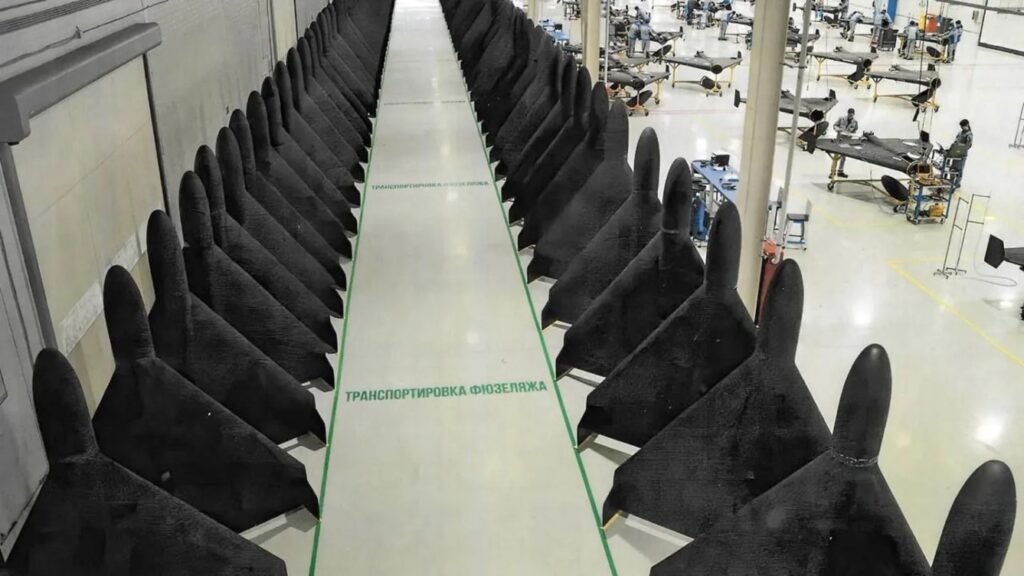Two Russian explosives production-linked plants go up in flames after drone strikes (video)

Ukrainian drones struck two Russian plants overnight on 14 June, damaging facilities connected to explosive production and petrochemical refining in southern Russia’s Stavropol Krai and the Volga region’s Samara Oblast. Videos from the scene, shared by several Telegram channels, show drone flyovers, interceptions, fires at the facilities, and the aftermath of the strikes.
Strikes on Nevinnomysk Azot in Stavropol
According to Ukrainian Center for Countering Disinformation (UCCD), the Nevinnomysk Azot plant in Stavropol Krai was one of the main targets. The factory produces over a million tons of ammonia and ammonium nitrate annually—essential components in explosive manufacturing.
Additional footage from Nevinnomysk shows that Ukraine has likely used its legendary Liutyi long-range kamikaze drones.
— Euromaidan Press (@EuromaidanPress) June 14, 2025TG/Exilenova+ pic.twitter.com/1BkL1fOShR
Footage shared by Telegram channels suggests the control room of Nevinnomysk Azot may have been destroyed.
Regional governor Vladimir Vladimirov claimed “debris” from a drone fell in the city’s industrial zone.
The Ukrainian Armed Forces stated that the strike aimed to degrade Russia’s capacity to produce explosives and munitions. The General Staff described the Nevinnomysk facility as a key supplier for Russia’s war against Ukraine, reporting multiple explosions and fires at the site.
Drone attack on Samara Oblast industrial site
In a parallel operation, drones struck another major industrial site in Novokuybyshevsk, Samara Oblast. The Ukrainian military identified the target as the Novokuybyshevsk Petrochemical Company (NNK), a top-tier supplier of components used in artillery explosives.
More footage from Nevinnomysk – the indoor video allegedly shows the factory's control room.
— Euromaidan Press (@EuromaidanPress) June 14, 2025TG/Supernova+ pic.twitter.com/RVhpyx8GHq
Local residents reported the attack and resulting fire, and some Ukrainian sources suggested that the Novokuybyshevsk Catalyst Plant might have been the target. The facility focuses on regenerating catalysts for the oil processing and chemical industries and developing new types of catalysts and adsorbents through experimental production.
Samara Oblast governor Vyacheslav Fedorishchev confirmed a UAV attack attempt on one of Novokuybyshevsk’s industrial facilities, stating there were no casualties or major damage.
According to the Militarnyi outlet, NNK supplies ingredients to the Kazan Powder Plant and the Sverdlov Plant, both engaged in manufacturing explosive materials including octogen and hexogen. Public contracts show transactions worth hundreds of millions of rubles for explosive production materials, highlighting the plant’s direct ties to Russia’s defense sector.
The Ukrainian General Staff described the Novokuybyshevsk plant as directly involved in supplying components for Russia’s artillery shell production.
Ukrainian military confirms targeting of military-linked facilities
The military stressed that its drone strikes were conducted in coordination with other Ukrainian Defense Forces units and reiterated its commitment to undermining Russia’s war capacity.
Damage assessment is ongoing, according to the report.
Russian claims
Russia’s Defense Ministry claimed that its air defense downed 66 Ukrainian drones during the night, failing even to mention Samara Oblast. The MoD claimed the interceptions included 30 in Voronezh Oblast, 10 in Belgorod Oblast, eight in Stavropol Krai, and six in occupied Crimea.


